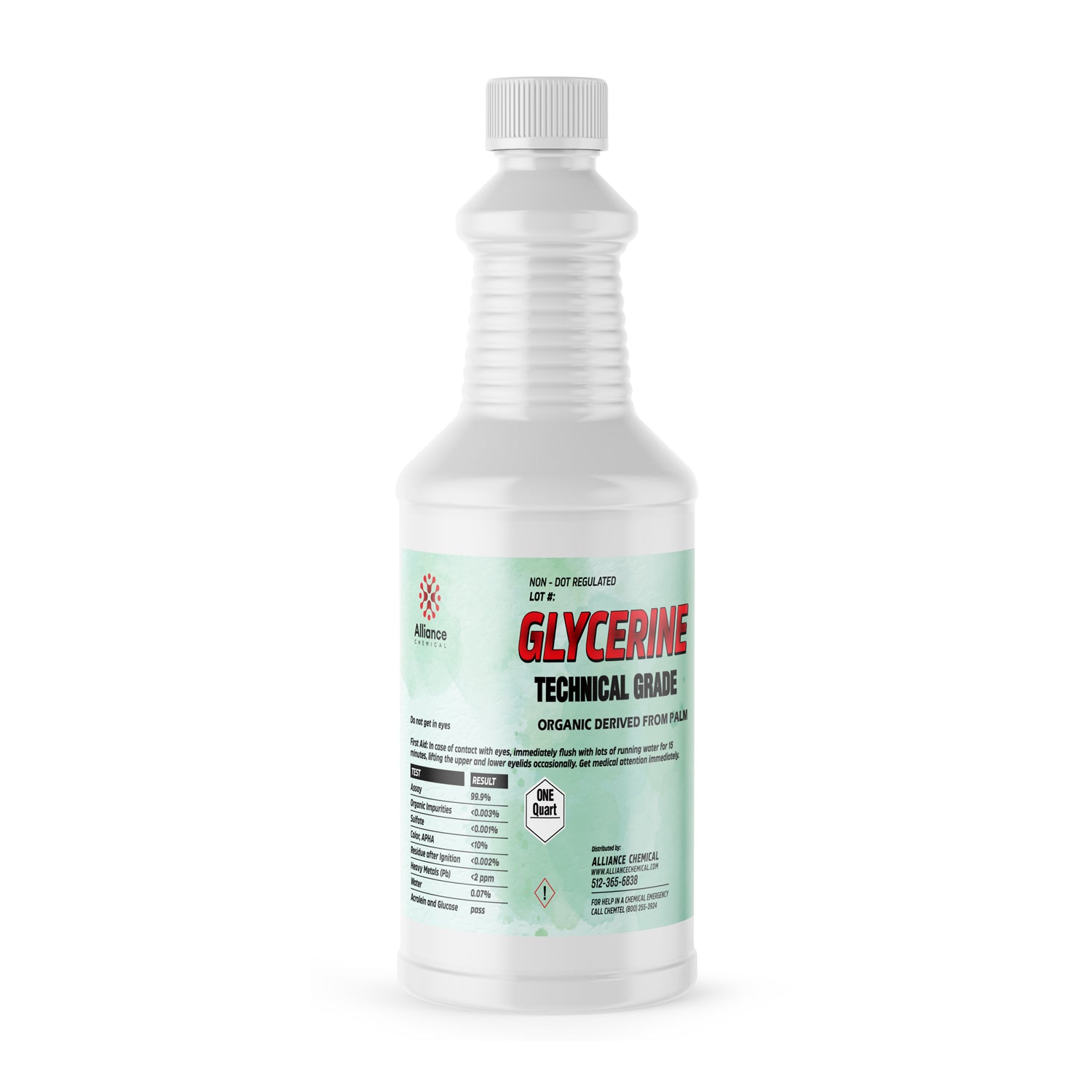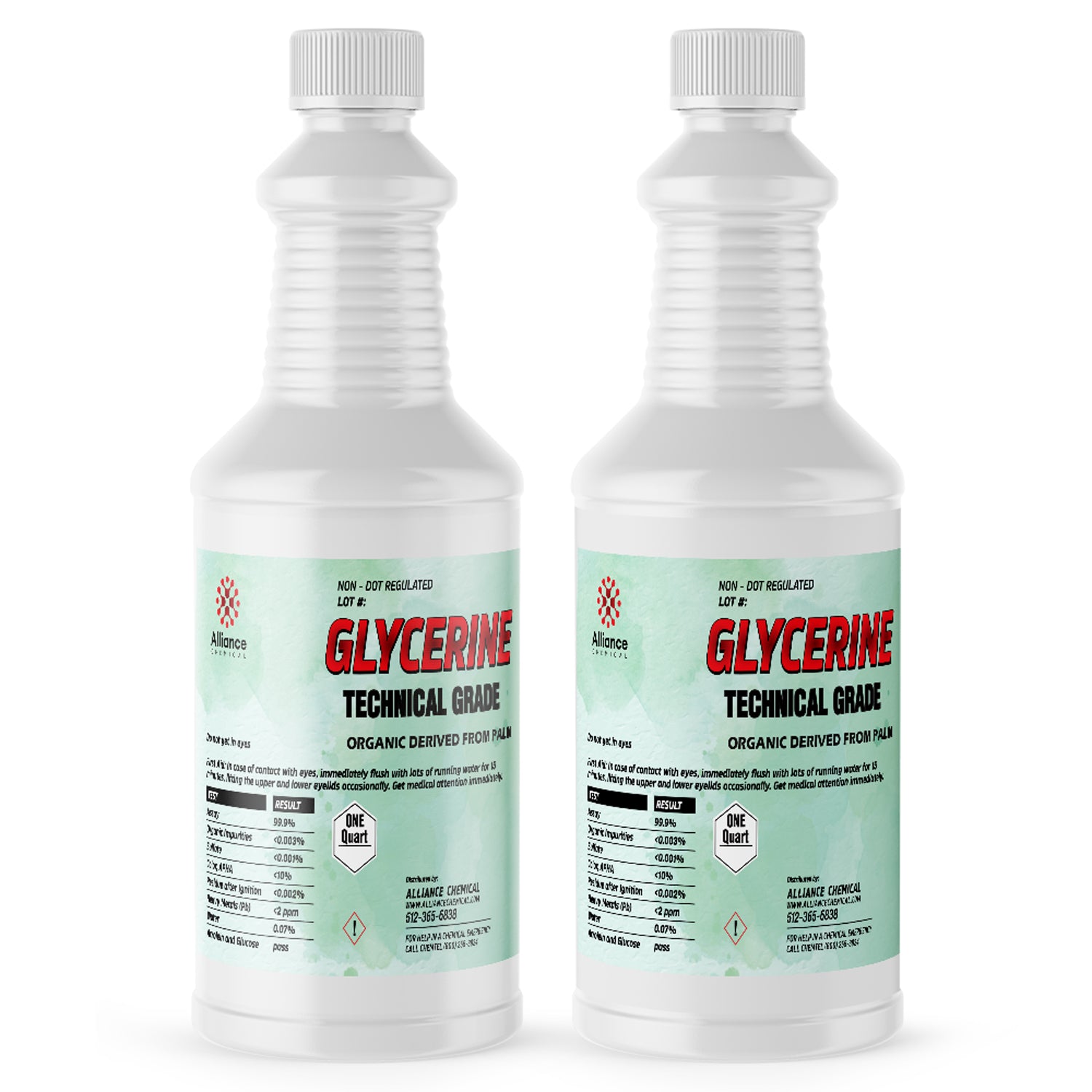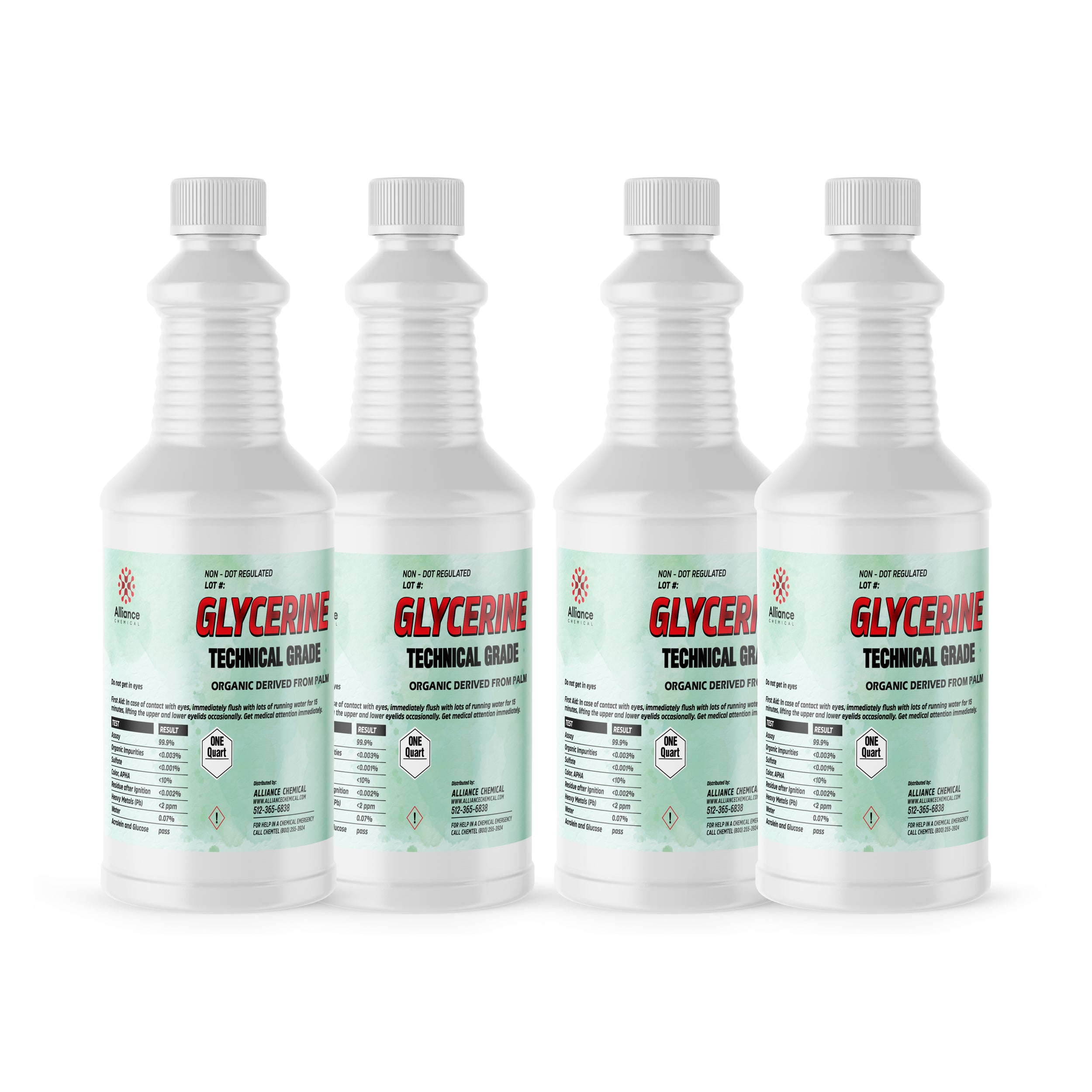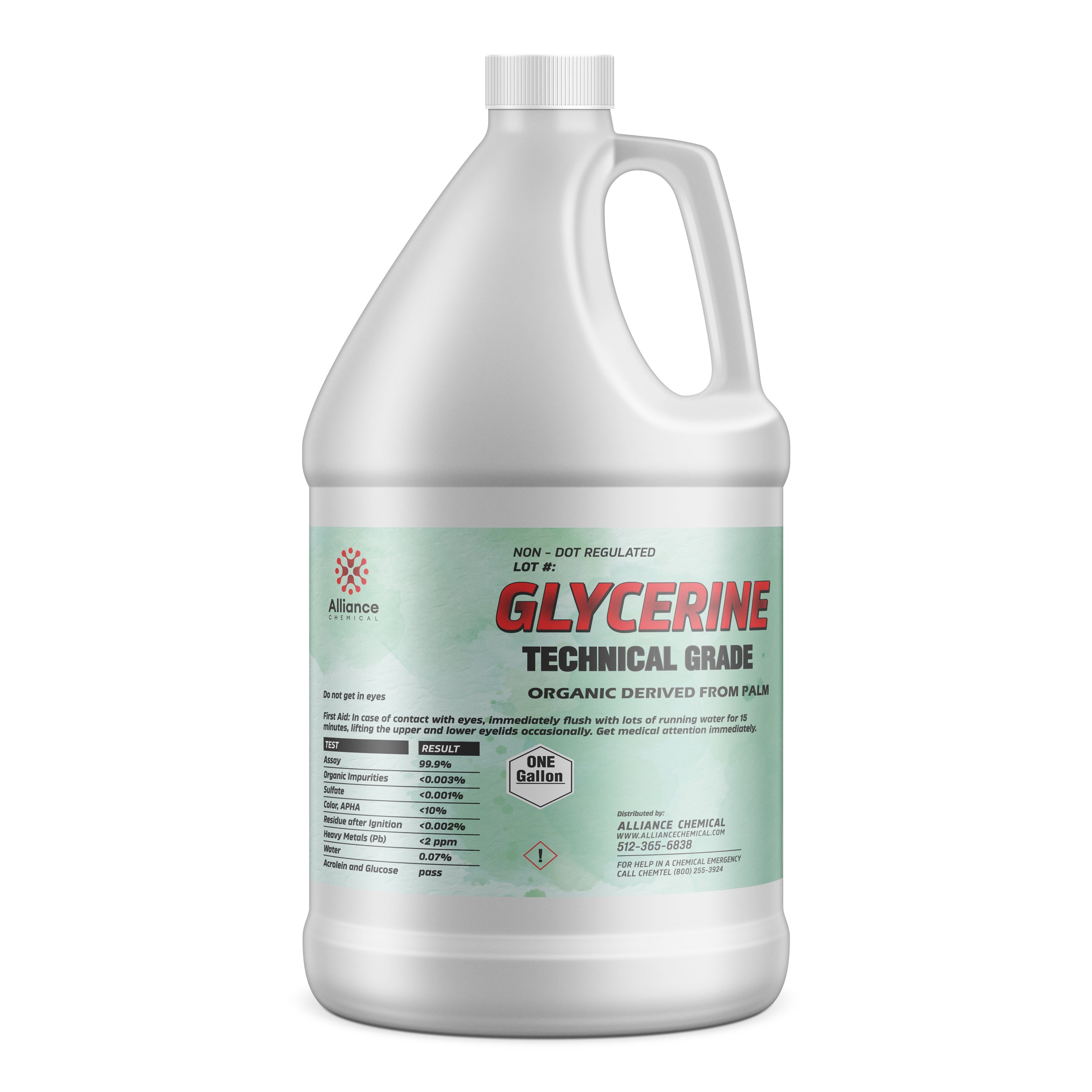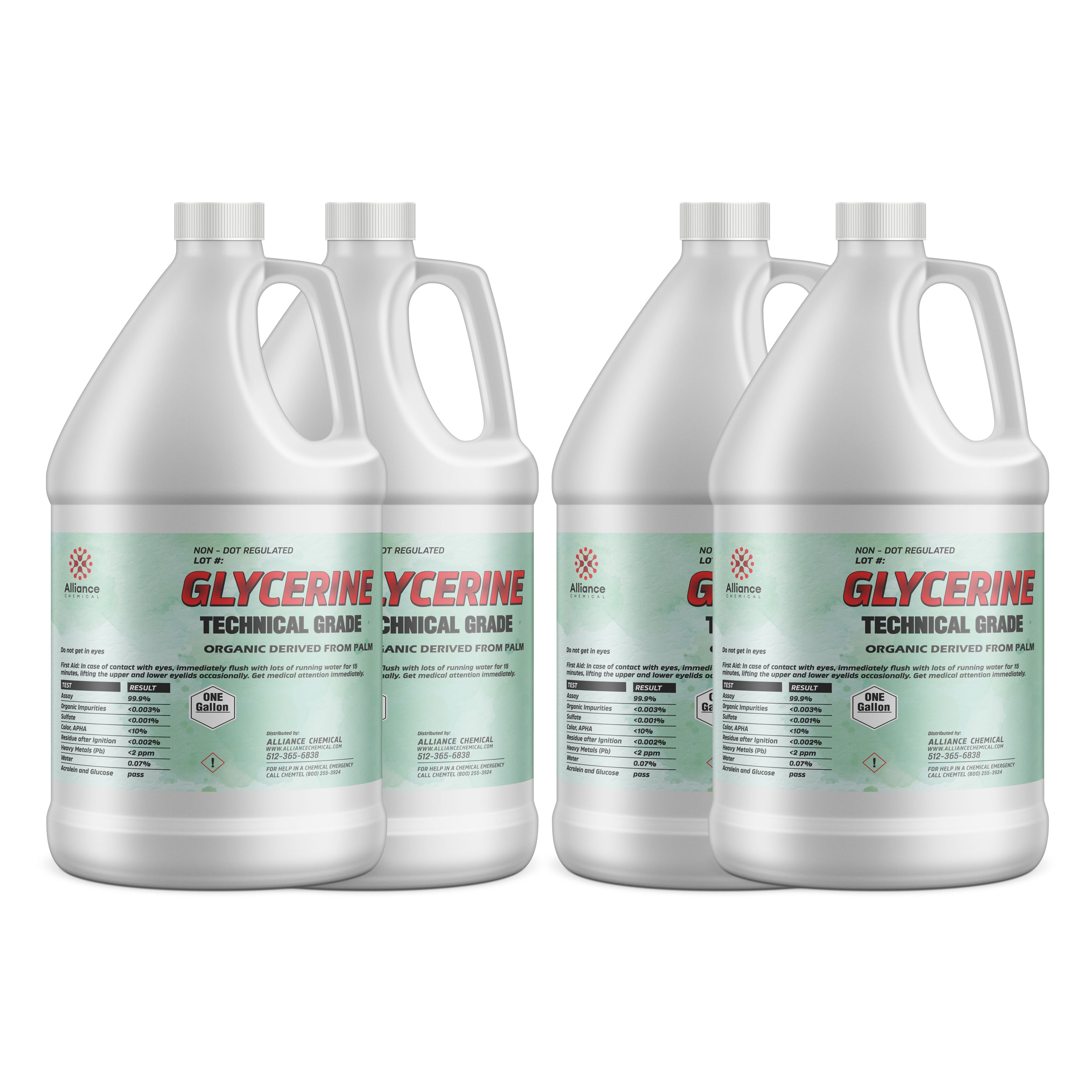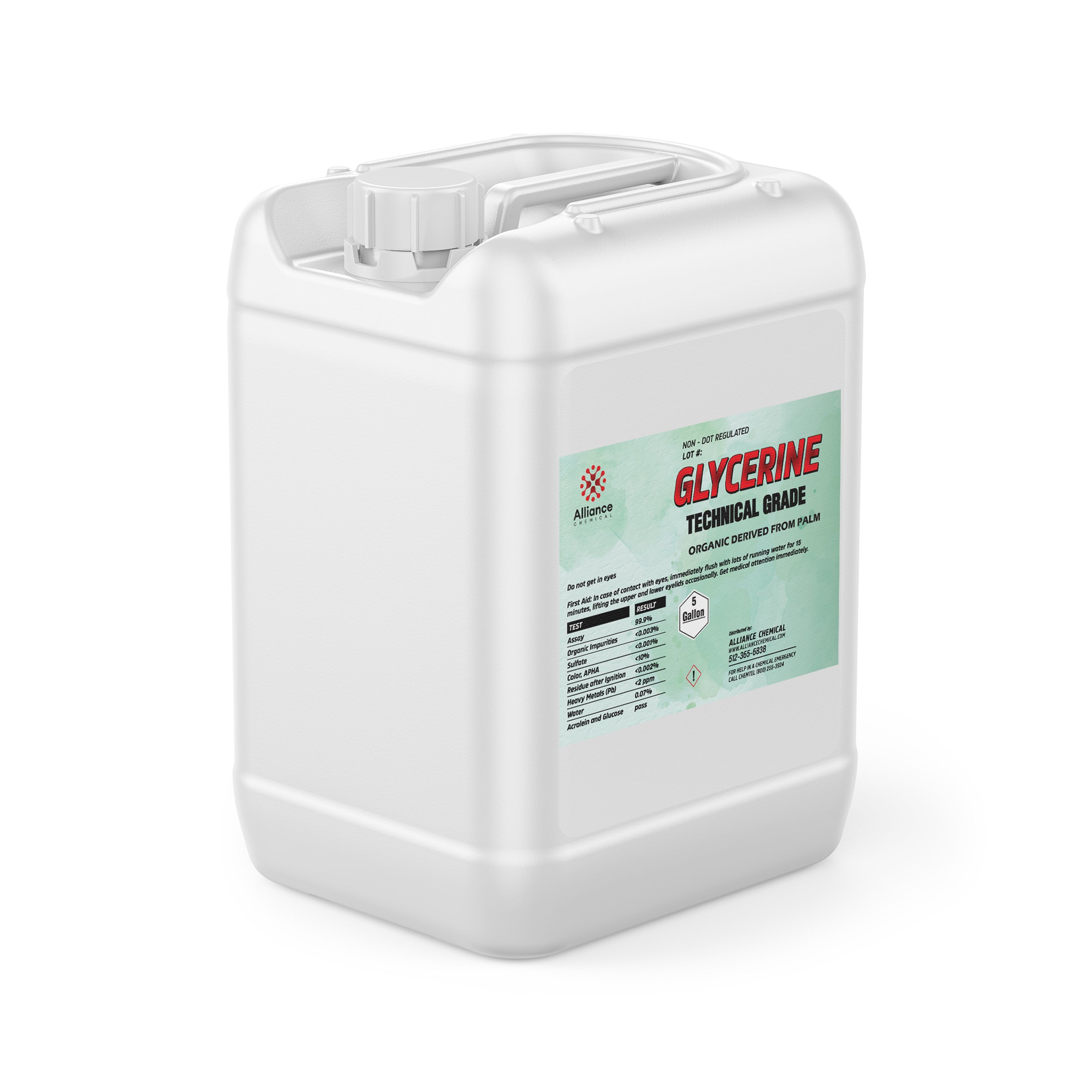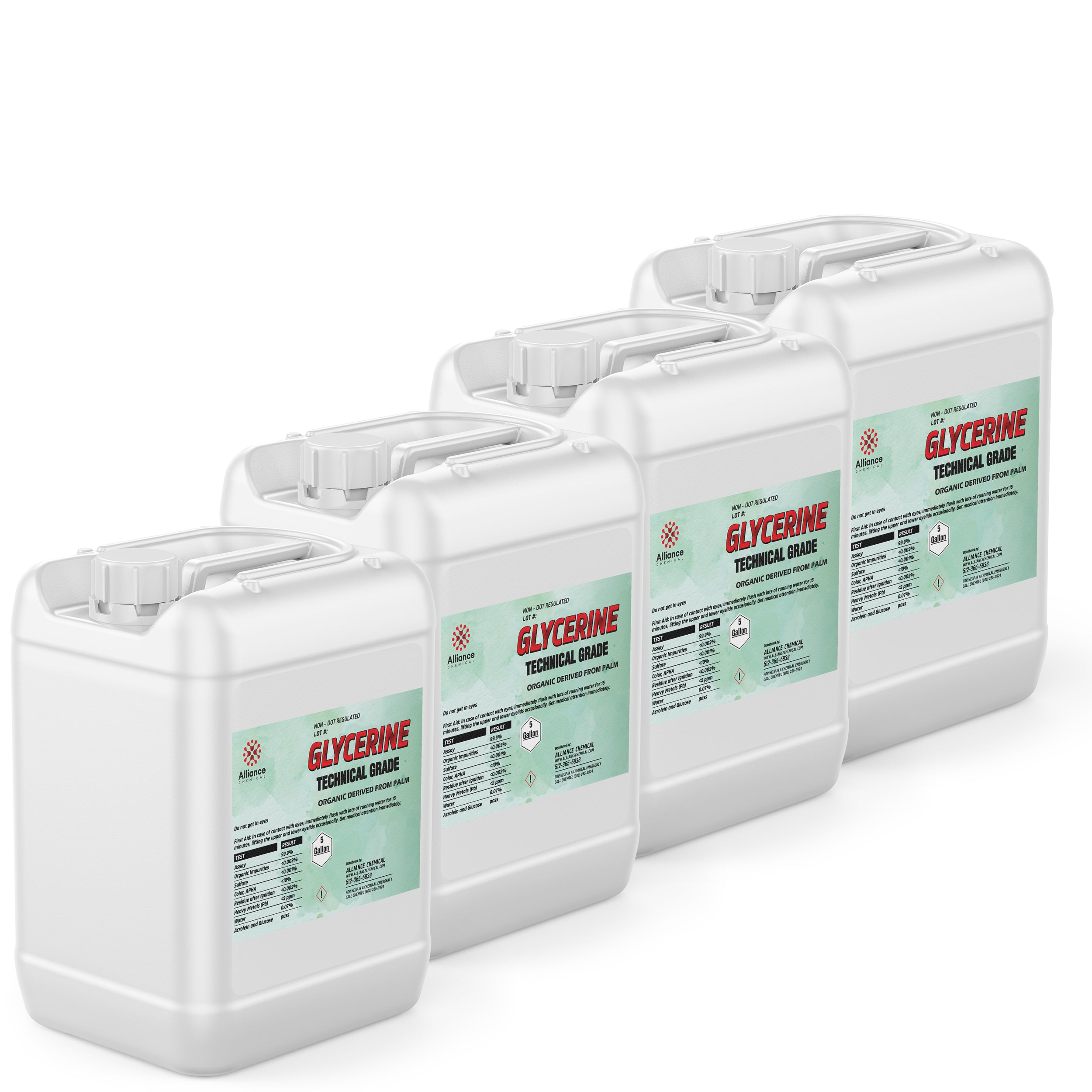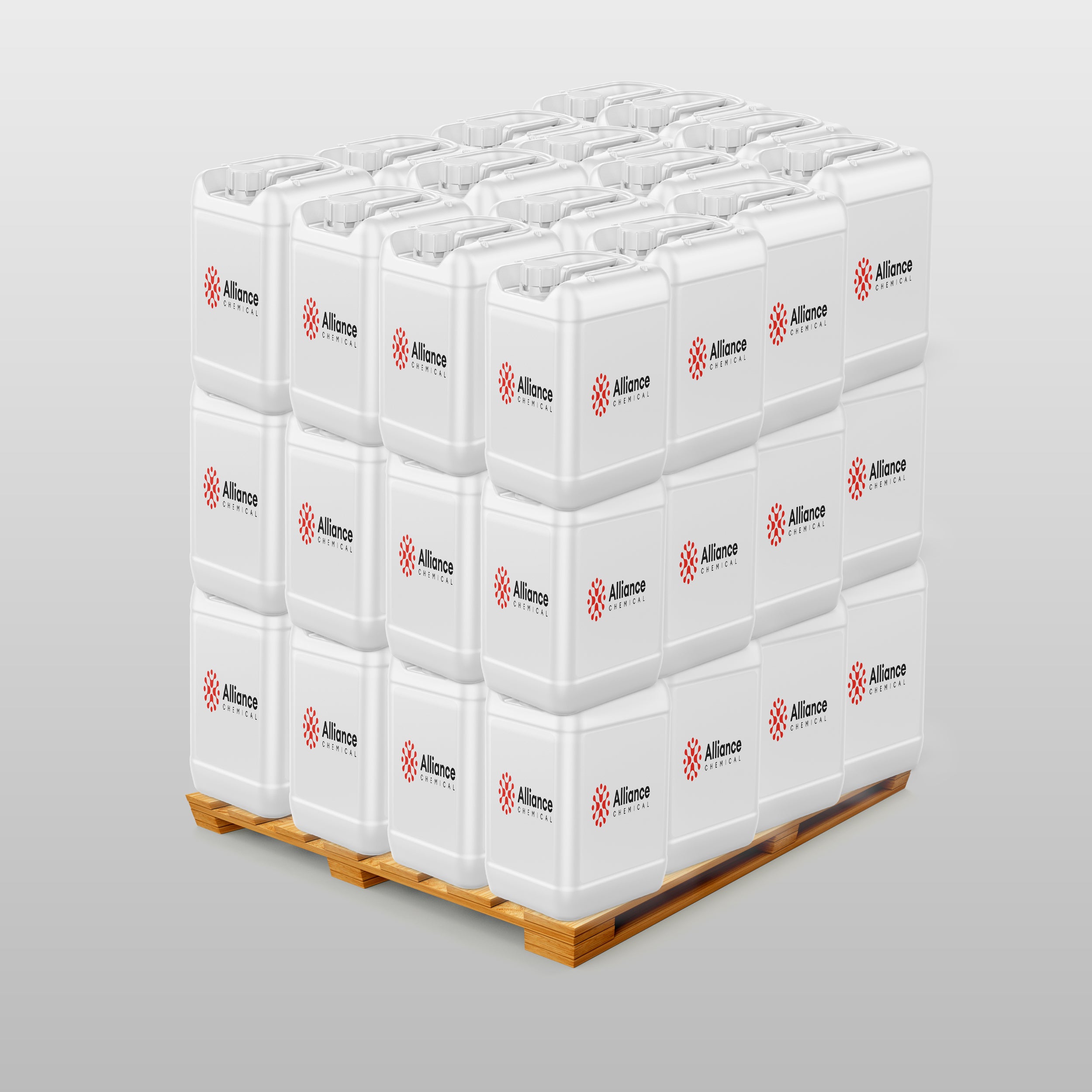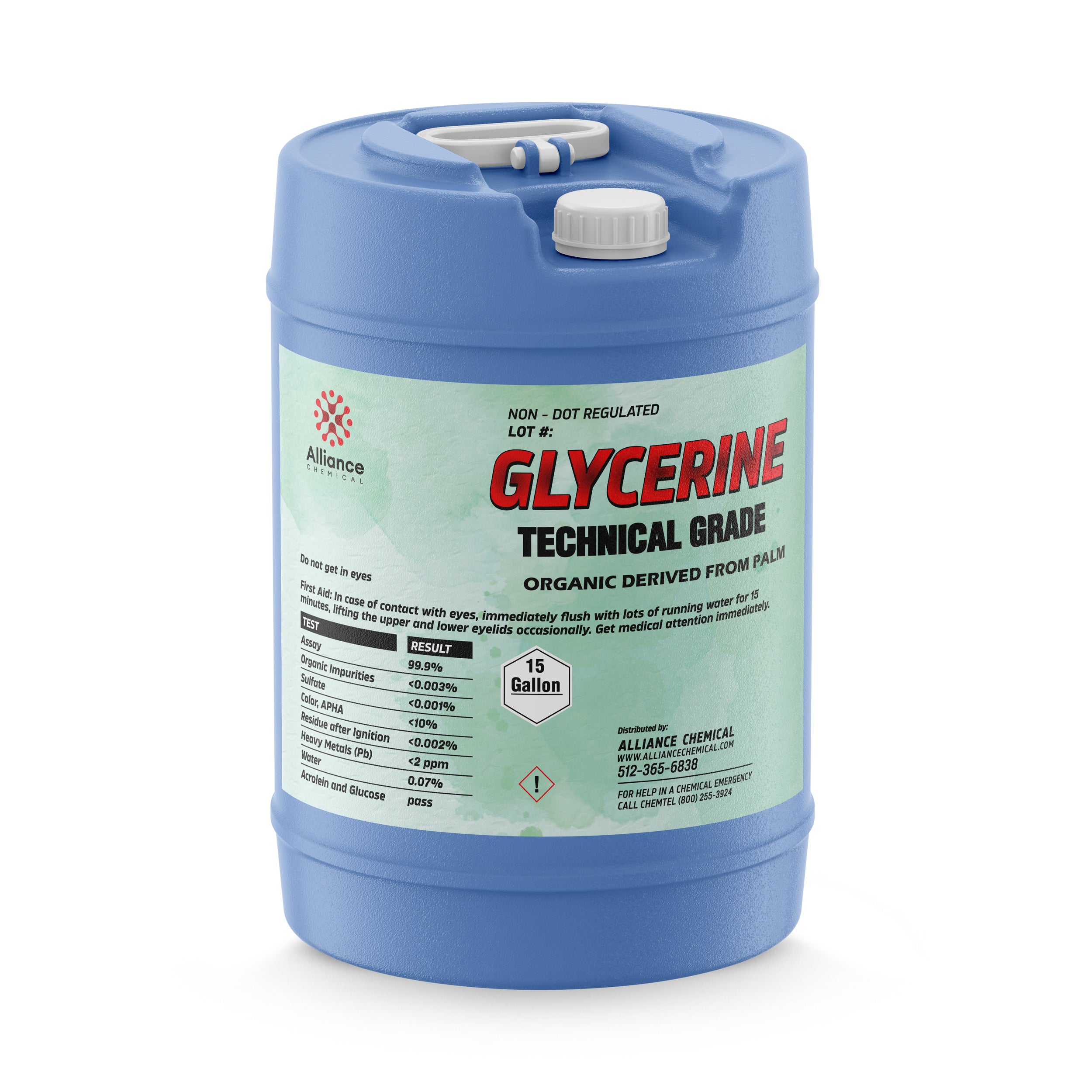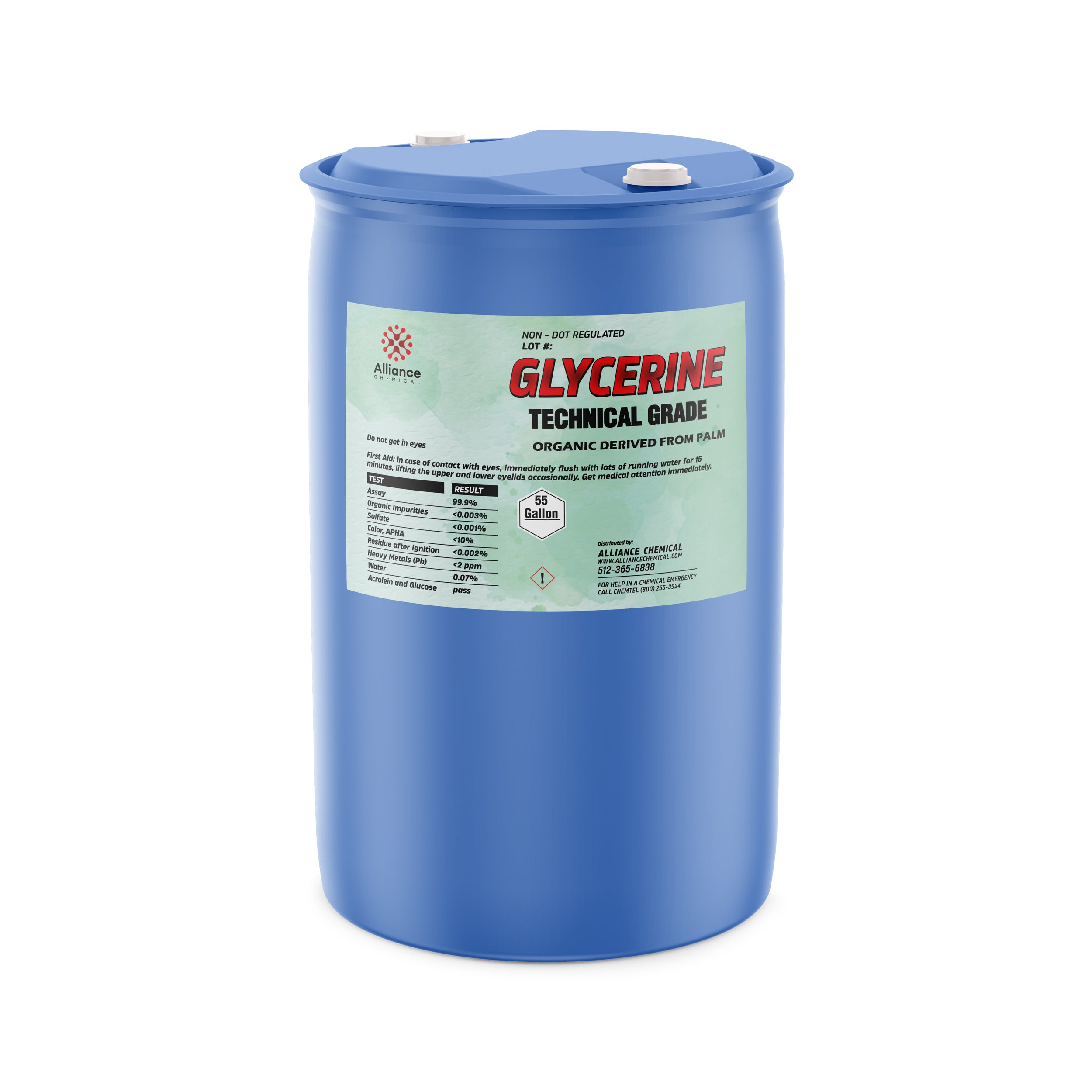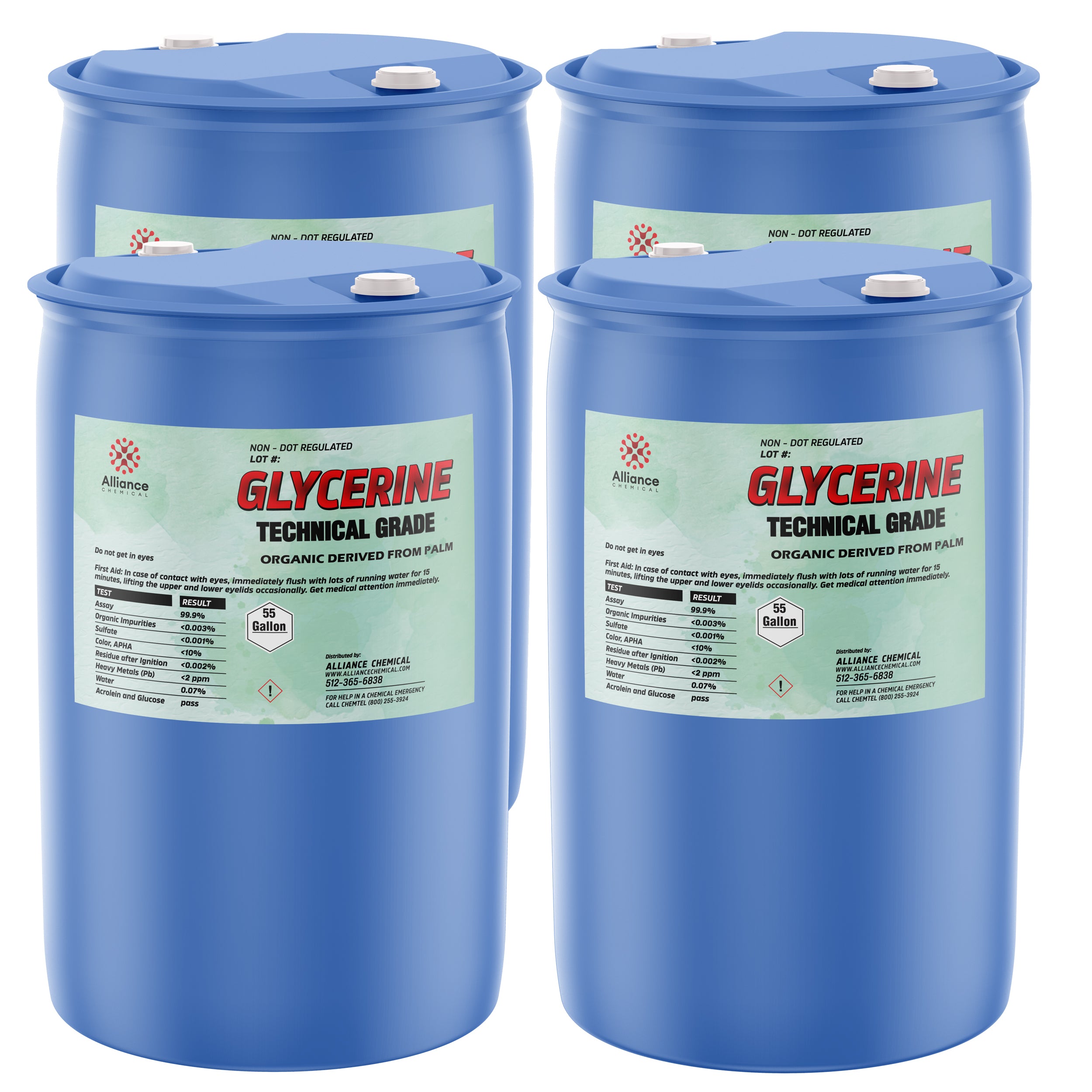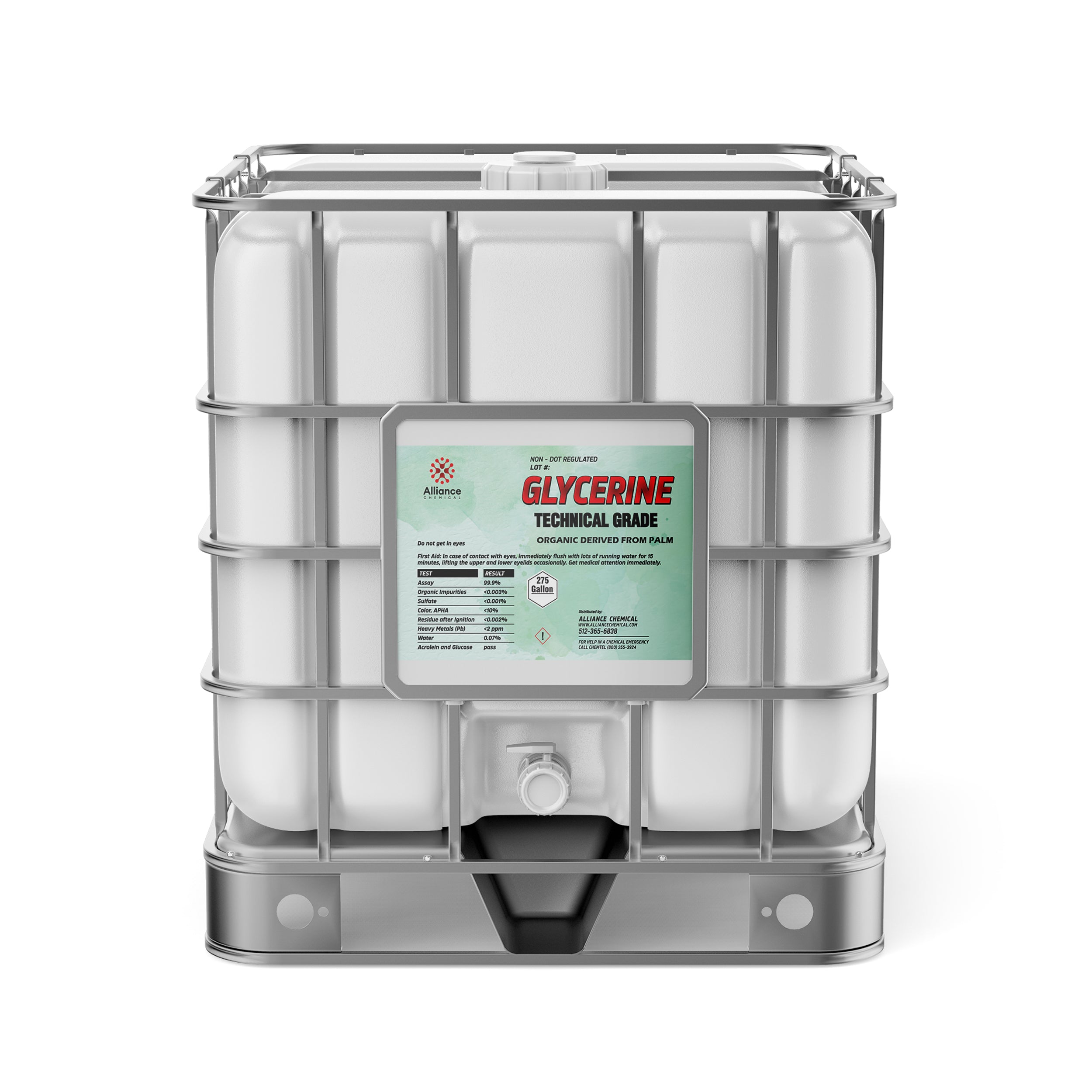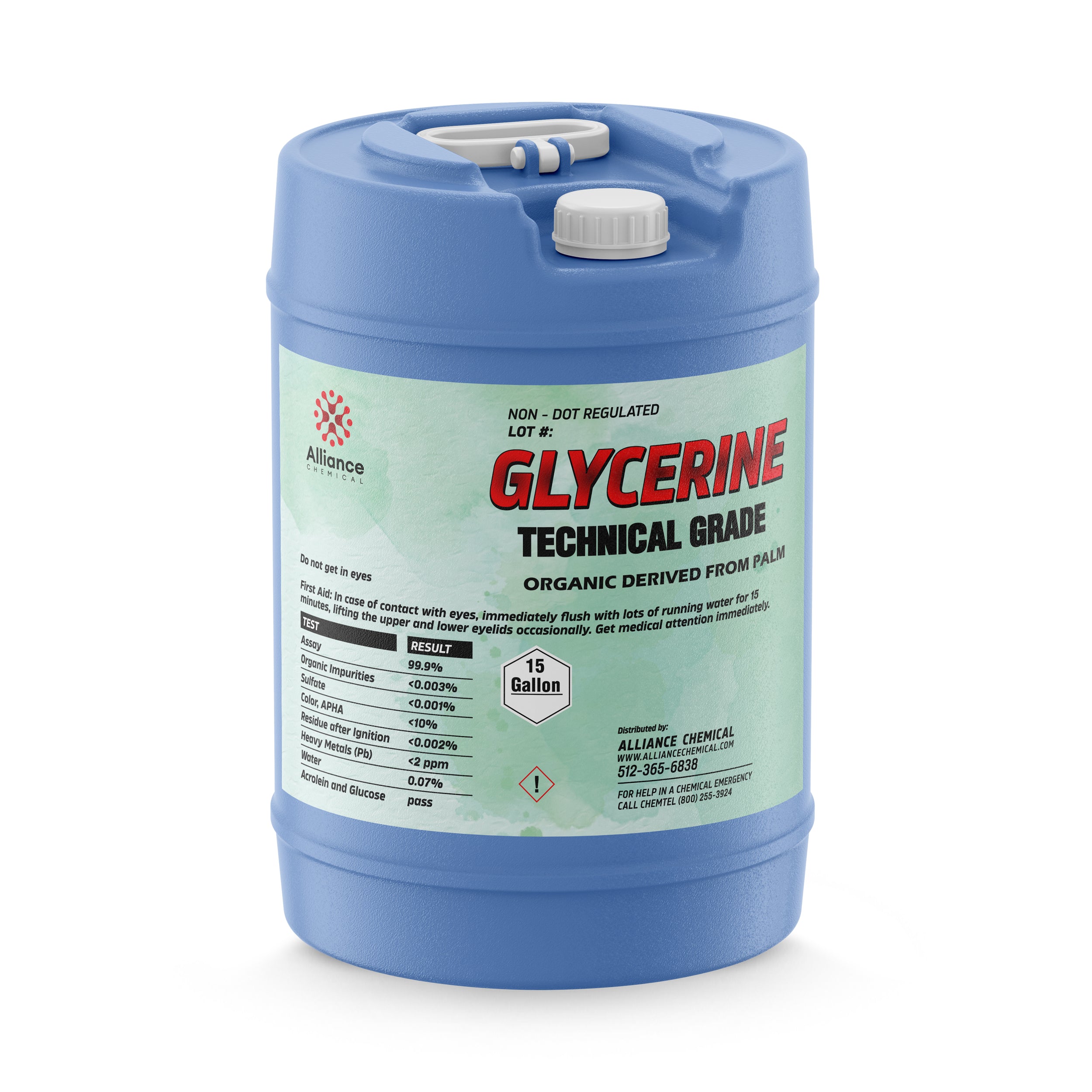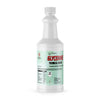Ask a question
Product Overview
Glycerin Technical Grade, also known as glycerol and 1,2,3-Propanetriol, is a clear, colorless liquid that is odorless, viscous, and highly hygroscopic. With the chemical formula C₃H₈O₃ and a molecular weight of 92.09 g/mol, this triol participates readily in hydrogen-bonding networks, offering dependable solvent properties and moisture retention across diverse industrial applications. The product is manufactured to stringent technical-grade specifications to ensure consistent performance in formulation, processing, and end-use environments. Typical assay values indicate high purity (assay wt% 99.6% typical; 99–100.5% min–max) as determined by standardized titration against NaOH, with a low impurity burden suitable for both cosmetic and pharmaceutical-adjacent processing where applicable, and robust stability under recommended storage conditions.
In addition to its role as a humectant and solvent, glycerin technical grade exhibits favorable physical properties for formulation science, including a boiling range around 290°C, a freezing point near -37°C, and a viscosity of approximately 1.412 cP at 25°C. The product demonstrates good water and alcohol solubility and maintains a wide applicability window due to its low vapor pressure (20°C) of about 0.0013 mmHg and a refractive index near 1.474. With a typical specific gravity at 20°C of 1.253 and density around 1.261 g/mL (25°C), the material delivers predictable handling and dosage characteristics essential for scale-up in manufacturing environments.
Key Properties
- Appearance: Clear, colorless liquid
- Chemical Formula: C₃H₈O₃
- Molecular Weight: 92.09 g/mol
- Boiling Point: 290°C
- Specific Gravity (20°C): 1.253 (typical)
- Density (25°C): 1.261 g/mL
- pH (10% w/w aqueous solution): Typical 6 (range 5–7)
- Color (APHA/Hazen): Typical 5 (max 10)
- Assay (wt%): Typical 99.6% (min 99%, max 100.5%)
- Heavy Metals (ppm): Typical 2; Max 10 (ICP-OES/ICP-MS)
- Iron (Fe, ppm): Typical 0.05; Max 0.5
- Copper (Cu, ppm): Typical 0.05; Max 0.2
- Manganese (Mn, ppm): Typical 0.05; Max 0.2
- Nickel (Ni, ppm): Typical 0.05; Max 0.2
- Lead (Pb, ppm): Typical 0.05; Max 0.2
- Zinc (Zn, ppm): Typical 0.1; Max 0.5
- Aluminum (Al, ppm): Typical 0.1; Max 0.5
- Chromium (Cr, ppm): Typical 0.05; Max 0.2
- Chromium (Cr, ppm): 0.05 (typical)
- Chloride (Cl⁻, ppm): Typical 5; Max 15
- Nitrate (NO₃⁻, ppm): Typical 5; Max 20
- Sulfate (SO₄²⁻, ppm): Typical 10; Max 40
- Phosphate (PO₄³⁻, ppm): Typical 5; Max 20
- Sodium (Na⁺, ppm): Typical 0.5; Max 2
- Potassium (K⁺, ppm): Typical 0.2; Max 1
- Ammonium (NH₄⁺, ppm): Typical 0.5; Max 2
- Hydroperoxide (H₂O₂, ppm): Typical 0.2; Max 1
- Refractive Index (20°C): 1.474
- Vapor Pressure (20°C): 0.064 mmHg
- Flash Point (°C): 160 (C), 320 (F)
- Shelf Life: 24 months from manufacture date when stored properly
Common Applications
- Humectant: Cosmetic and personal care formulations rely on glycerin to retain moisture and support skin hydration, improving texture and shelf stability.
- Solvent: Used in pharmaceutical and chemical formulations as a versatile solvent for active compounds and excipients with favorable miscibility profiles.
- Plasticizer: In polymer manufacturing, glycerin provides flexibility and processability for films and molded plastics.
- Food Additive: Functions as a sweetener and preservative; compatible with many food systems under applicable regulatory guidance.
- Antifreeze Agent: Employed in automotive and heat-transfer fluids to depress the freezing point and maintain viscosity at low temperatures.
- Emulsifier: Stabilizes oil-water systems in food and beverage applications, supporting product texture and suspension of dispersed phases.
Safety Precautions
The glycerin technical grade is recommended for handling under controlled conditions per standard industrial hygiene practices. Store in a cool, dry location away from direct sunlight, in HDPE or glass containers to minimize contamination. Use appropriate PPE, including gloves and safety goggles, and ensure ventilation during transfer to limit inhalation exposure. Protect spills with absorbent materials and dispose of waste in accordance with local regulations. Routine inspection of storage vessels and piping helps prevent contamination and maintain product integrity.
Exposure considerations follow SDS guidance: the product is not classified as hazardous under GHS, with a WARNING signal word. In the event of exposure, standard first-aid procedures apply: eyes—rinse cautiously with water for several minutes; skin—wash with soap and water; inhalation—move to fresh air; ingestion—rinse mouth and seek medical attention if symptoms occur. For transport, the material is not classified as dangerous goods. Ensure compatibility with oxidizers and avoid storage near reactive chemicals. Follow regulatory and safety data sheet recommendations prior to use.
Benefits
✔ High Purity and Consistent Quality – Meets USP-NF Monograph and Technical Grade specifications, enabling reliable performance across formulations.
✔ Broad Solubility and Hygroscopic Nature – Water and alcohol solubility support versatile formulation strategies and stable moisture management in products.
✔ Stability and Processability – Suitable viscosity and low vapor pressure facilitate handling in large-scale manufacturing and downstream processing.
| Property | Value |
|---|---|
| Molecular Weight | 92.09 g/mol |
| Formula | C3H8O3 |
| Assay | 100%% |
| Flash Point | 160 |
| Form | Liquid |
| Solubility | Highly water-soluble |
| Appearance | Viscous clear liquid, transparent colorless |
| Melting Point | 18 °C |
| Boiling Point | 290 °C |
| Industry | Industrial, Chemical Manufacturing, Research, Polymer |
Compare Products
| Price |
|---|
| SKU |
| Rating |
| Discount |
| Vendor |
| Tags |
| Weight |
| Stock |
| Short Description |

